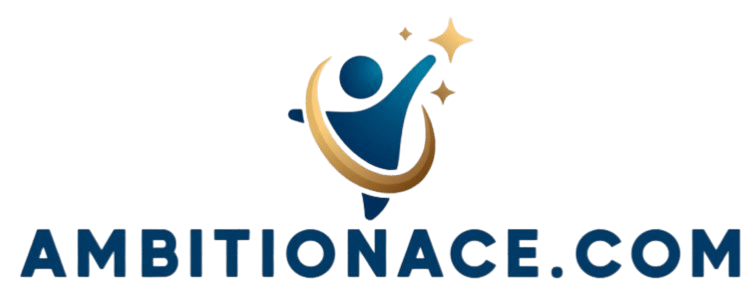How to Use Feedback for Goal Adjustment
Setting goals is a fundamental aspect of both personal and professional growth. The journey truly begins once you define those objectives.
Feedback is invaluable for refining and adjusting your goals, ensuring they stay relevant and achievable. Let s dive into how feedback can propel your goals forward!
By mastering the art of incorporating feedback into your goal-setting process, you’ll position yourself to maximize your efforts and attain lasting success. Explore how feedback can transform your approach to reaching your aspirations!
Contents
- Key Takeaways:
- The Importance of Feedback in Goal Setting
- Types of Feedback
- How to Gather Feedback
- Analyzing and Interpreting Feedback
- Using Feedback to Adjust Goals
- Maximizing the Benefits of Feedback
- Frequently Asked Questions
- 1. What is the importance of using feedback for goal adjustment?
- 2. How do I well use feedback for goal adjustment?
- 3. How often should I seek feedback for goal adjustment?
- 4. Can negative feedback be helpful for goal adjustment?
- 5. What if the feedback I receive conflicts with my initial goal?
- 6. How do I stay motivated while using feedback for goal adjustment?
Key Takeaways:

- Feedback is essential for successful goal setting, providing valuable insights and perspectives from various sources.
- Understanding and analyzing feedback can help adjust goals effectively, whether intrinsic or extrinsic.
- Incorporating feedback into the goal-setting process can lead to better goal attainment and personal growth.
The Importance of Feedback in Goal Setting
Feedback serves as a cornerstone in the realm of goal setting. It acts as both a motivational catalyst and a vital element in managing employee performance. By incorporating effective feedback mechanisms, you can elevate employee development and ensure that strategic priorities harmonize with individual activities.
This ultimately enhances overall organizational performance.
Grasping the intricacies of feedback accountability and its influence on goal commitment enables you to cultivate a positive initiative climate. This fosters an environment where employees actively engage and strive toward their goals.
Embracing feedback-driven goal setting is essential for performance enhancement and achieving collective success.
Understanding the Role of Feedback
The role of feedback in goal setting is intricate. It weaves together performance feedback and qualitative factors that shape your self-regulatory behaviors.
Understanding how feedback influences your approach to achieving objectives is crucial. This dynamic interplay creates an environment where you can adapt your strategies based on insights received, leading to more thoughtful choices.
With effective performance feedback, you gain clarity on your progress and identify areas for improvement. Meanwhile, qualitative factors like your emotional responses to feedback can significantly boost or hinder your motivation and resilience.
As you navigate these elements, you enhance your capacity for self-regulation. This allows for ongoing goal adjustments that pave the way for sustained personal and professional growth.
Types of Feedback
Feedback can be divided into two main categories: intrinsic feedback and extrinsic feedback.
Intrinsic feedback comes from your own evaluation of your performance, while extrinsic feedback is provided by others, such as managers or peers. Each type holds substantial importance in shaping your performance standards and motivation.
Intrinsic vs. Extrinsic Feedback
Intrinsic feedback emerges from your reflections on performance. In contrast, extrinsic feedback comes from observations by peers or supervisors. Both forms significantly influence your motivation and self-regulatory behaviors.
These two types of feedback are pivotal in performance management. They shape how you perceive your progress and set future goals. Intrinsic feedback cultivates a sense of autonomy and personal satisfaction, often igniting a stronger internal motivation.
Conversely, extrinsic feedback offers valuable insights and recognition, crucial for reinforcing positive behaviors and guiding your efforts.
When you effectively balance both forms, you enhance your commitment to goals. This encourages you to pursue your objectives with unwavering determination. However, relying too heavily on extrinsic feedback may dampen your intrinsic motivation, leading you to lose sight of your personal aspirations.
Don’t wait! Start gathering feedback today to accelerate your goal achievement!
What feedback have you received that changed your perspective?
How to Gather Feedback

Gathering feedback effectively involves pinpointing a range of sources and methods to obtain insights. This could include structured performance evaluations, informal check-ins, or collaborative teamwork all essential for nurturing active participation within your team.
Each approach plays a vital role in creating a culture that values open communication and continuous improvement.
Sources and Methods for Obtaining Feedback
Key sources for obtaining feedback include peer reviews, management assessments, and customer service evaluations. Methods range from formal performance evaluations to casual conversations and audit feedback.
These diverse feedback sources are essential in shaping your initiatives and overall performance. Peer reviews foster a culture of collaboration and continuous improvement, allowing you to learn from the perspectives of your colleagues. Management assessments provide structured insights that align your personal goals with the broader objectives of the organization. Customer service evaluations deliver real-world feedback, highlighting areas where you can sharpen your skills and enhance client interactions.
By employing a mix of formal and informal feedback methods, organizations cultivate an environment that promotes open dialogue. This ensures you receive constructive insights that drive performance enhancement and boost engagement.
Analyzing and Interpreting Feedback
Analyzing and interpreting feedback is crucial for transforming it into actionable insights. By employing effective strategies that consider qualitative factors, you can significantly enhance performance and achieve your goals.
Effective Strategies for Understanding Feedback
Implementing effective strategies to understand feedback enhances its utility and reinforces your accountability, paving the way for self-management skills that drive performance improvement.
Adopt a reflective practice approach, which encourages thorough analysis of feedback before taking action. Engaging in open dialogues with your peers creates a teamwork-friendly space where diverse perspectives deepen your understanding.
Utilizing frameworks like the SMART criteria can help you set specific, measurable, achievable, relevant, and time-bound goals based on the feedback you receive.
Regular check-ins create opportunities for ongoing conversations about your performance, allowing for necessary adjustments and realignments with expectations. Together, these strategies foster a culture of accountability, leading to enhanced performance outcomes and your personal growth.
Using Feedback to Adjust Goals
Utilizing feedback to refine your goals is a crucial element of using feedback in your goal tracking process. This approach empowers you to bridge performance gaps and elevate the effectiveness of your objectives through ongoing tracking and adaptation.
Incorporating Feedback into Goal Setting Process

Incorporating feedback into your goal-setting process ensures you meet performance standards and reinforces your commitment to those goals. This fosters a culture of active participation among your team.
By actively seeking and integrating constructive insights, you create an environment where individuals feel valued and understood, significantly enhancing overall employee engagement. This dynamic approach allows your team to align their personal objectives with the broader organizational goals, crafting a cohesive vision of success.
As you provide timely feedback, team members become more aware of their strengths and areas for improvement. This fosters a sense of ownership in their work. Ultimately, this integration not only motivates your staff to perform at their best but also drives organizational performance, leading to elevated results and sustained growth.
Start applying these strategies today to see immediate improvement!
Maximizing the Benefits of Feedback
Maximizing the benefits of feedback is essential for achieving your goals. It enhances the utility of the feedback you receive and serves as a powerful motivator in your development journey.
Embracing helpful feedback can elevate your performance and drive continuous improvement in your professional path.
Tips for Using Feedback to Achieve Goals
Implementing specific strategies can significantly elevate your journey toward achieving goals. This ensures effective performance enhancement and accountability throughout the tracking process.
Actively seek helpful feedback and adopt a growth mindset. A growth mindset is the belief that you can improve through effort and learning. Transform insights into actionable steps by engaging in regular check-ins with peers or mentors. This cultivates a culture where feedback is not just welcomed but celebrated.
Focus on specific areas for improvement instead of relying on vague suggestions. This specificity makes the feedback far more impactful. Consistent progress tracking enables real-time adjustments, enhancing your adaptability and boosting the likelihood of reaching your goals.
Embracing these strategies creates an environment for continuous improvement.
Frequently Asked Questions
1. What is the importance of using feedback for goal adjustment?
Feedback helps you see how you re doing and make changes to reach your goals.
2. How do I well use feedback for goal adjustment?

Stay open to helpful feedback. Use it to check your current approach and make changes as needed.
3. How often should I seek feedback for goal adjustment?
Make it a habit to ask for feedback regularly, whether through self-reflection or input from others. Always assess your progress to stay on track!
4. Can negative feedback be helpful for goal adjustment?
Absolutely! Negative feedback can highlight areas to improve that you might not see otherwise.
5. What if the feedback I receive conflicts with my initial goal?
Consider who gave the feedback. If it helps you reach your goal better, think about using feedback loops in goal tracking to adjust your goal.
6. How do I stay motivated while using feedback for goal adjustment?
Use feedback as a boost to keep moving forward. Celebrate what you achieve and keep striving for your end goal!






